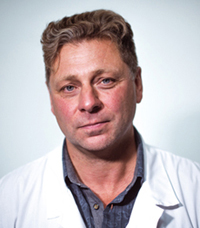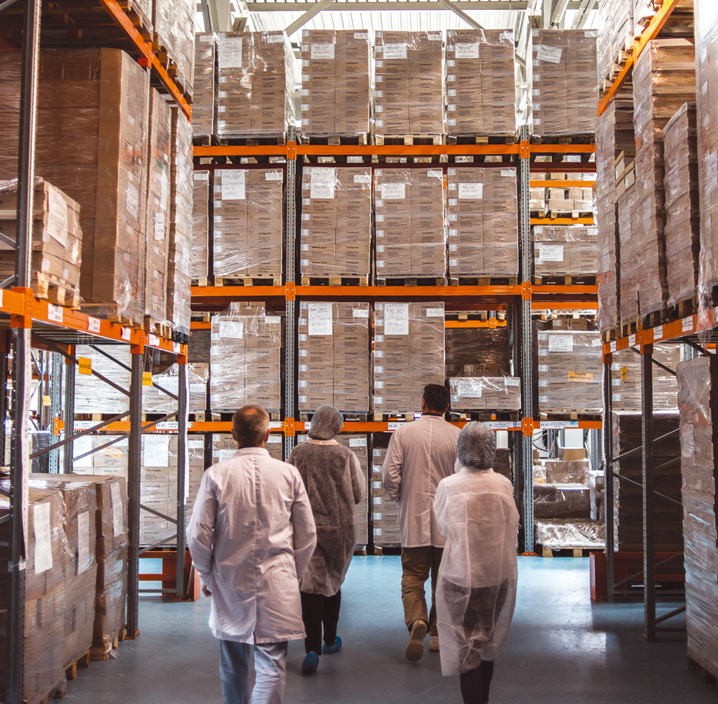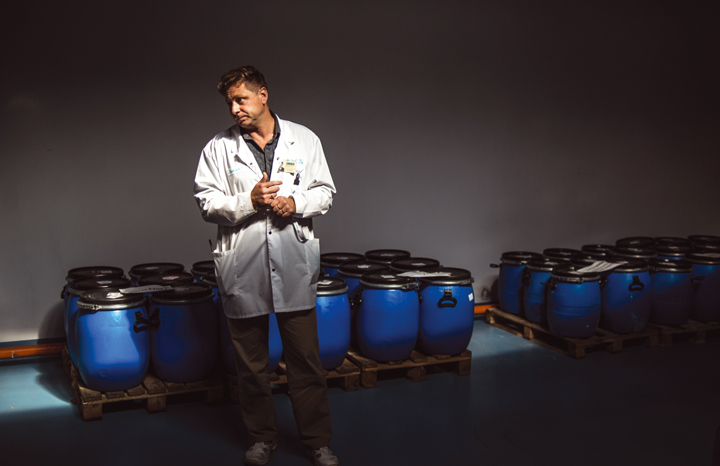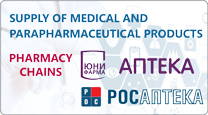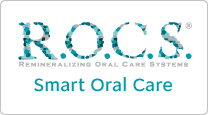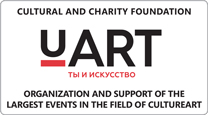How toothpaste is made?
Text: Yana Klevtsova, Arina Soboleva
Photo: Sergey Karpov
Opening a tube of toothpaste with mint and
chocolate flavor, we are looking forward to its sweet taste and are prepared to
devote a few moments of our life to it. But we perfectly understand that mint
and chocolate have very little to do with oral hygiene, that there is something
else, unknown
We decided that it is the easiest to look for the answer directly at the manufacturing facility and went to one of the plants of DRС group of companies, which produces all the toothpaste of R. O. C. S. brand, and arranged for a meeting with a man who knows everything about how toothpaste is made and what it is made from.
|
|
|
Alexander Karpov Candidate of Engineering Science, Director Deneral |
The plant is located 100 kilometers from the capital in Stupino District of Moscow Region. While looking at the building of the plant, one can assume that this is a research institute or a confectionery. That is, nothing specific can be said about it. It is a low white building, neither with tubes, nor with any noise. However, it does not smell sweets, we breathe in fresh autumn air on the porch. Admiring a bright blue sky, trees, we express our admiration of the landscape to Alexander Karpov, who is waiting for us at the entrance.
“In fact, the forest that surrounds us is Stupino Industrial
Park, there are 20 more plants around here,” Alexander noted a little
ironically. “Mostly those are plants
A good investment climate is created here and a lot of powerful producers have been attracted. But the place is still environmentally friendly,” says Alexander, “It is important for us that the production does not violate the natural environment around. There are neither harmful emissions into the atmosphere, or dust. It may seem unlikely, but industrial waste water, which we drain off, is purer than water in an artesian well.”
|
Today |
Hydrotherapeutic procedures
Water is very important for manufacturing oral care products. Water content in some of them, for example, in mouthwashes, reaches 85%, and directly in toothpaste it is about 15%.
Water for manufacturing processes comes from our own
artesian well, which is about two hundred meters deep, that meets the drinking
water standards. However, this is not enough, and it has its own system
“Is that really necessary?” we ask Alexander. “You do not produce medicaments, do you?”
“By and large, the directive, according to which we manufacture products, is closer to the pharmacy than to the cosmetic industry. Our factory is certified according to ISO and GMP standards of the French company Afnoir, a leading auditor not only in Europe, but in the world. By the way, they are the main auditor of the pharmaceutical industry.”
|
The past preparation process is fully automated |
We learn geography
Raw materials warehouse is a large room, the dimensions of which are not easy to assess due to the racks, extending over the horizon. Here we can find everything that being mingled with the familiar purified water turns into toothpaste. There are boxes everywhere, but what is inside?
“Before coming to you, we watched a video about the production of toothpastes on Discovery channel. There huge trucks with limestone, quartz and sand drove to the plant, where they went entirely to the production. Do you really have sand here, in these boxes?”
“We use silicon dioxide as abrasive. It is really brought to us in containers and we spend about a ton of it a day. Our toothpaste contains ultrafine abrasive. Its particles are so microscopic that do not damage the surface of teeth. Abrasives help clean teeth mechanically. They are used not only in toothpastes; abrasives are used for cleaning and polishing in a variety of areas. If we ignore all the therapeutic properties of our toothpastes, there are two components which are directly responsible for cleaning. The first of them is abrasive, and the second one is bromelain. It is a proteolytic enzyme that destroys the protein. The fact is that bacteria stick to the surface of teeth, forming plaque, and bromelain destroys them breaking up protein. In addition, it forms so to say, a positive charge, which repels harmful bacteria on the surface of the tooth. So when we brush our teeth with our toothpaste, we feel like the slipperiness of the tooth, smoothness and cleanness.”— “And what is bromelain made of?”
“It is an extract from pineapple, so, as you might guess, we import it from countries where pineapples are grown. In fact, you can study geography in this warehouse, because we order components from around the world. Silicon dioxide, for example, is imported from England and from India, if we are talking about fragrances, then, of course, they are brought from France.”
“Besides detergents and chemical components with a complex mechanism of action, as it turned out, the ingredients that we encounter in everyday life are added to the toothpaste.
For different pastes we use special components that improve oral health, providing preventive and therapeutic effects, for example, the components that help fight stomatitis or gingivitis. We have bags of licorice root, which is used in pharmaceuticals, extracts of chamomile and linden. There are oils of eucalyptus, thyme and clove, all of them being natural ingredients.”
“What happens with all this next? How many stages is toothpaste from here, from the raw materials in the warehouse to the tube?”
“By and large, it is just one stage away. This is the process of boiling. However, we add the components that we produce ourselves to some of the toothpastes. Come on, I’ll show it to you.”
|
|
The mystery of the production of raw materials
There is another building inside the factory. This is a production module, which is structurally separated from other parts of the construction.
Before going inside, we put on robes, shoe covers and caps, just like in a movie about a secret laboratory. And here we are in the room where calcium hydroxyapatite is being synthesized. It sounds scary, but it looks rather mysterious. There is a tank, from which numerous tubes extend, in the corner of a spacious room with lots of natural light, in complete silence.
Hydroxyapatite calcium is the primary mineral, which our
teeth consist of. Besides the fact that it is added to toothpaste as a
component for strengthening the teeth, it is widely used in pharmaceuticals and
cosmetics worldwide. The only problem is that its production
|
|
How toothpaste is boiled
The most important production unit from the point of view of technology turned out to be rather simple. Well, the toothpaste is just being boiled; we can neither approach it, nor even smell. But you can see your reflection, distorted in a funny way, in the shining metal surfaces of boilers.
The heart of all productive process is boiling the toothpaste. The most part of the production unit is occupied by caldrons, measuring approximately the half of human. Glancing in the glass window of the tank, it is possible to see how homogeneous mass is being steadily stirred inside. As technologists say, than larger a caldron is, the more difficult it is to control the microbiological environment inside and the more preservatives are required. Therefore, only small tanks are used here.
The process of boiling is fully automatized. The machines mix, heat and cool the toothpaste.
We cannot understand what paste is boiling in what caldron, though we try hard. The tanks are closed hermetically and let out no smell. When the process is over, the prepared toothpaste will begin to flow along the pipes to a nearby room to fill in multicolored tubes. Meanwhile, the workers of the production unit are telling us, that there are only a couple of so powerful machines as these in Europe. And the analogues of the systems that allow working with the formulations necessary here do not exist at all. They are created especially for this production, which is difficult from the point of view of physical and chemical parameters.
The cycle of production at DRC plant is 4−5 times longer,
than, for example, for the most widespread
|
|
Final stage
the machines fill the tubes with the toothpaste in the area which is protected from contact with the external environment. But it is much more exciting in the packing department. Bright packaging is flashing and we are fascinated, looking at this kaleidoscope.
After the tubes with the toothpaste are hermetically closed, it is already possible to take them up. However they are passed into the safe hands of machines again as packing in small boxes is also performed automatically. The atmosphere in the department looks like the hurried conveyer line work. Here the same spirit of regularity and calmness is felt, as well as anywhere we have already been. And it is not clear what exactly creates this atmosphere. It might be simply daylight that passes through the large ceiling windows and fills in the whole room.
“We have already been walking around the production unit for about an hour, and still we have met very few people. Is it so quiet here because nobody is present?”
“About 100 people work for us in two shift. The employees might just feel calm here. We started this plant three years ago, but by the moment of its opening we had already been engaged in the production for ten years. So, we took the core of the team from the old plant, it was in Domodedovo. It was important for us to keep the specialists, having large experience. For many people working here is a labour of love, because they like the concept of our product. Today this plant is one of the best and most modern in our industry not only in Russia, but also far beyond its borders.”
“And how fast do technologies go out of date? How long is it possible to remain the most modern in this industry?”
«We have to move all the time, because if we stop, we will begin to fall behind. We never save on innovations, and due to it our equipment is really modern now, I would say, it is even fashionable. About a year ago we started the production of hydroxyapatite, we use bromelain, develop special formulations of child’s toothpastes; we constantly search for new decisions. Certainly, the industry on the whole begins to develop in the same directions more actively, trying to repeat our developments. But it only proves that we succeeded in being ahead all the time until now.”
 |
 |
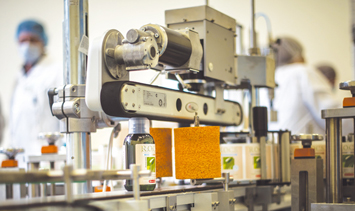 |
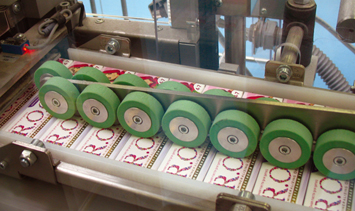 |
Back


